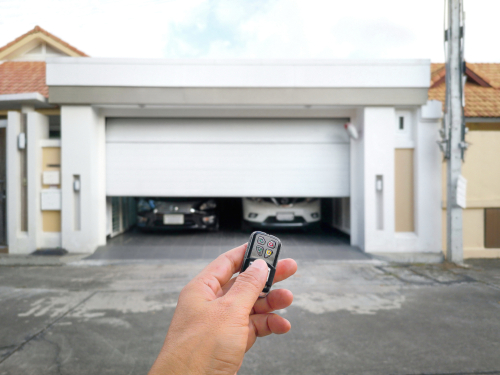
The Ultimate 10-Point Garage Door Inspection Checklist Every Homeowner Needs
A functioning garage door is often taken for granted—until it stops working. For most homeowners, the garage door is the primary access point to their home, yet it is also one of the most overlooked parts when it comes to regular maintenance. A thorough garage door inspection can help prevent unexpected breakdowns, enhance safety, extend the life of the door, and avoid costly repairs.
Whether you’re a DIY enthusiast or just a cautious homeowner, this 10-point inspection checklist will give you everything you need to keep your garage door in top shape. Let’s dive in.
1. Check the Garage Door Panels and Surface
Begin with a simple visual inspection of the garage door panels. Look for any signs of:
- Dents or dings
- Rust formation (especially on steel doors)
- Warping (common in wood doors)
- Cracks or peeling paint
Structural damage affects aesthetics and can compromise the door’s alignment, insulation, and security. Make sure your panels are intact, especially if you live in an area prone to storms or extreme temperatures.
If your garage door is showing significant wear, it might be time to consult a professional for repair or replacement.
2. Inspect the Weather Stripping
The rubber seal at the bottom of your garage door, known as the weather stripping, plays a critical role in energy efficiency and pest control.
Check for:
- Cracks, brittleness, or complete detachment
- Light visible beneath the door when closed
Faulty weather stripping can lead to drafts, water seepage, and rodent invasions. Replace it promptly to maintain an insulated and protected space.
3. Test the Door Balance
An unbalanced garage door puts extra stress on your opener and can cause premature wear.
Here’s how to test it:
- Disconnect the automatic opener (pull the emergency release cord).
- Manually lift the door halfway and let go.
If it stays in place, it’s balanced. If it falls or rises, the springs may need adjusting.
Caution: Torsion spring adjustments are dangerous and should only be performed by trained professionals.
4. Examine the Springs and Cables
Springs and cables are under high tension and are essential to the smooth operation of your garage door.
Look for:
- Rust or corrosion
- Frayed or snapped cables
- Gaps in torsion springs
These components wear out over time and can break suddenly, posing a serious safety risk. Do not attempt to replace springs or cables yourself—this is a job for experts with the right tools and training.
5. Lubricate All Moving Parts
Proper lubrication reduces friction, extends the lifespan of components, and ensures quieter operation.
Apply a garage door-specific lubricant to:
- Rollers
- Hinges
- Tracks (lightly)
- Springs
- Bearings and bushings
Avoid using WD-40—it’s a cleaner, not a long-lasting lubricant. Instead, use silicone-based or lithium-based products designed for garage doors.
6. Inspect and Clean the Tracks
The door’s motion is guided by the vertical and horizontal tracks. Dirty or misaligned tracks can cause the door to operate unevenly or even derail.
Steps to inspect:
- Use a flashlight to check for debris, rust, or bends.
- Clean the tracks with a damp cloth and mild detergent.
- Avoid greasing the tracks—it can attract more dirt.
Ensure they are securely attached to the wall and ceiling. If they are warped or loose, contact a technician.
7. Test the Auto-Reverse Safety Feature
Modern garage doors are equipped with auto-reverse mechanisms to prevent accidents.
There are two types of safety mechanisms to test:
Photoelectric Sensors (Eyes):
- Place an object (like a broomstick) in the door’s path.
- Press the close button—the door should reverse immediately.
Mechanical Auto-Reverse:
- With the door fully open, place a piece of wood under it.
- Close the door. It should automatically reverse when it touches the object.
If either test fails, your garage door is a safety hazard and needs immediate servicing.
8. Evaluate the Garage Door Opener
Your garage door opener is the brain of the system. To ensure it’s functioning correctly:
- Listen for strange sounds like grinding or squealing.
- Check the wall switch and remote controls.
- Make sure the door responds promptly and doesn’t jerk during operation.
Also, check the backup battery (if available) and replace it every 1–2 years. An opener that struggles to lift the door could indicate a motor issue or excessive door weight due to balance problems.
9. Inspect the Rollers
Garage door rollers should glide smoothly along the tracks. Over time, they can wear out or crack, especially if made of nylon.
Inspect for:
- Worn, chipped, or cracked rollers
- Unusual noise during movement
- Rollers that pop out of the track
Rollers should be replaced every 5–7 years, depending on use. Replacing rollers can be a DIY task for experienced homeowners, but use extreme caution and consult a pro if you are unsure.
10. Tighten the Hardware
Garage doors move up and down multiple times a day. With that constant movement, it’s natural for bolts and brackets to loosen over time.
Use a socket wrench to inspect and tighten:
- Hinge bolts
- Roller brackets
- Track supports
Never over-tighten, and don’t attempt to adjust red-painted hardware (this typically indicates high-tension components).
Bonus Tip: Schedule an Annual Professional Garage Door Inspection
While a homeowner inspection is invaluable, nothing replaces the trained eye of a seasoned professional. Technicians can catch early signs of wear that may not be obvious to the average person.
A professional garage door inspection includes:
- Full system lubrication
- Balance and force test
- Sensor calibration
- Spring tension checks
- Door alignment verification
An annual tune-up can help extend the life of your door and opener, improve safety, and give you peace of mind.
Why Regular Garage Door Inspections Matter
Your garage door is the largest moving part of your home. Neglecting it can lead to:
- Unexpected breakdowns
- Security vulnerabilities
- Injury risks
- Costly emergency repairs
Investing a little time and effort into regular inspections and maintenance can help you avoid all of the above. Think of it like your car: a little preventative care goes a long way.
When to Call the Pros
If you notice any of the following, call a garage door technician immediately:
- The door is shaking, grinding, or moving unevenly.
- It won’t close or open fully.
- Springs, cables, or rollers look damaged.
- The opener is making strange noises or failing to respond.
- Your garage door fails the safety reverse test.
Trust Denton Overhead Door & Garage Door Repair
At Denton Overhead Door & Garage Door Repair, we’ve been serving homeowners and businesses in Denton and surrounding areas for over 35 years. From minor fixes to major installations, we’ve seen—and repaired—it all.
Why choose us?
- Same-day service
- Honest, affordable rates
- Highly trained technicians
- Repairs and installations for any door type or manufacturer
- Fully licensed and insured
Whether you need a comprehensive garage door inspection, urgent repair, or a brand-new door, our team is ready to help. We’ll get the job done right—the first time.
Ready to Book Your Garage Door Inspection?
Don’t wait for a breakdown to discover a problem. Get ahead of potential issues by scheduling your garage door inspection today.
Let us take care of your garage door, so you can get back to what matters most.
Categorised in: Garage Doors





